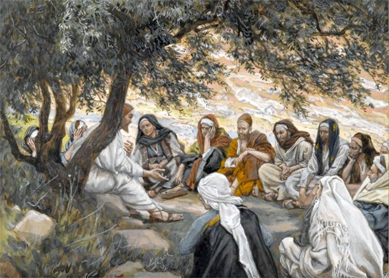In all three Synoptic Gospels, Jesus calls a tax collector to be a disciple. Mark and Luke call the tax collector Levi, but he is called Matthew in the Gospel of Matthew. In the second century, the Apostle Matthew was identified with the Evangelist Matthew.
How does Matthew relate to Levi, the tax collector called by Jesus?
Matthew is included in all four canonical lists of the twelve apostles (Matt 10:3, Mark 3:18, Luke 6:15, Acts 1:13). He is also traditionally identified with Levi, a tax collector whom Jesus calls and dines with in Mark 2:13-17 and Luke 5:27-32. In the Gospel of Matthew, this tax collector is named Matthew (Matt 9:9-13), and the list of twelve apostles specifies that Matthew was a tax collector (Matt 10:3). The writer of the Gospel of Matthew might have been claiming that Matthew and Levi were the same historical person, or the author might have conflated two different persons (whether intentionally or by mistake). Since dual naming was common in Roman Palestine and since Matthew was a common name there, it is at least conceivable that an individual could be called both Levi and Matthew.
If Matthew is to be identified with Levi, there is some irony insofar as Matthew was the name of the ancestral hero Mattathias, who liberated the Jewish people from foreign oppression (1Macc 2:1-14), while Levi was the patriarch whose descendants were set apart for temple service (Num 8:5-26); by contrast, the gospels’ Levi Matthew would have been collaborating with the oppressive, polytheistic Roman Empire.
What is Matthew’s significance in the Gospel of Matthew?
In the Gospel of Matthew, the unique character of Matthew is both an apostle and a (former) tax collector. Matthew’s tax collectors, grouped with sinners (Matt 9:11), prostitutes (Matt 21:31, Matt 21:32), and gentiles (Matt 18:17), are common examples of those with wrong motives and behavior (Matt 5:46; Matt 18:17). Apparently disliked by the Pharisees (Matt 9:11), tax collectors are nonetheless friends and dinner companions of Jesus (Matt 9:10; Matt 11:19). Like sick persons in need of a physician, tax collectors and sinners need Jesus’s healing (Matt 9:12-13). In contrast, the disciples/apostles receive authority, like Jesus, to heal (Matt 10:1-6) and are destined to judge Israel from twelve thrones (Matt 19:28). Besides Judas the betrayer (Matt 10:4), Matthew is the only member of the twelve linked with sinners through his role as tax collector. His inclusion among the twelve indicates that, for the Gospel of Matthew, sinners can not only be healed (forgiven), but can also become close followers of Jesus responsible for healing others and eventually judging in the future kingdom.





